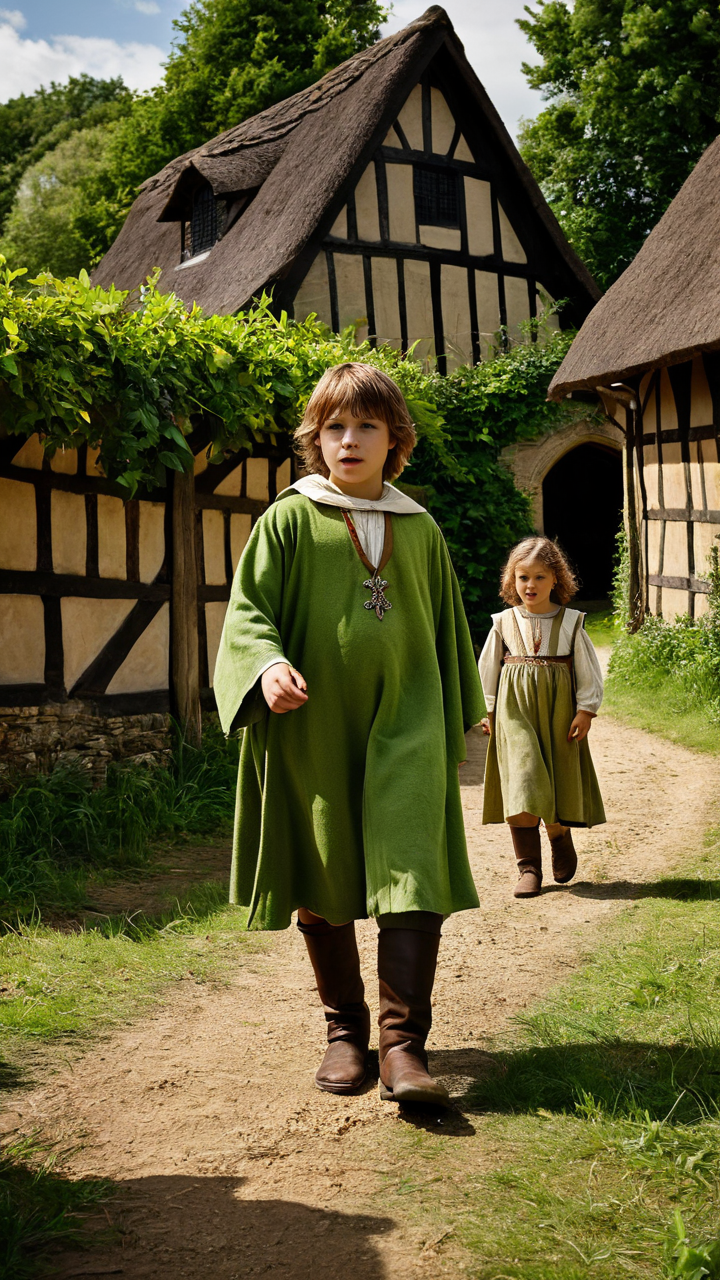
The Enigmatic Green Children of Woolpit
The story of the Green Children is steeped in mystery. Around 1185, two children – a boy and a girl – reportedly emerged from a pit near the village of Woolpit, Suffolk, England.
Their skin was a striking green, their language was unintelligible, and they only ate raw beans. After adapting to English culture and learning the language, they eventually revealed they came from “St.
Martin’s Land,” a place scholars have struggled to identify. Their green skin eventually faded, and they seemingly integrated into English society.
While the tale is often dismissed as folklore, the persistence of the story and the lack of any clear explanation fuel ongoing speculation.
Could Genetics Explain Their Green Hue?
While the story’s fantastical elements lend themselves to mythical interpretations, a scientific lens offers another perspective. Could a rare genetic condition account for the children’s unusual skin color?
Several possibilities exist, though definitive proof is, of course, impossible given the lack of modern medical examination.
One potential explanation involves a condition affecting porphyrin metabolism. Porphyrias are a group of inherited disorders affecting the production of heme, a crucial component of hemoglobin.
Some porphyrias can cause the skin to become abnormally pigmented, including a greenish hue.
[External Link: Link to a reputable medical source on porphyrias] However, the severity and specific type of porphyria needed to produce such a dramatic effect is rare.
Additionally, the complete fading of the green pigmentation presents a challenge to this theory. It suggests a possible temporary environmental factor may have contributed, rather than a lifelong genetic condition.
Other Genetic Possibilities and Environmental Factors
Beyond porphyrias, other rare genetic conditions could theoretically contribute to unusual skin pigmentation. However, many of these conditions present with other, more pronounced symptoms that aren’t mentioned in the accounts of the Green Children.
It’s crucial to remember the limitations of the historical record. The descriptions of the children’s appearance might be subjective, influenced by the biases and understanding of the time.
The lack of detail makes diagnosing a specific genetic condition extremely difficult. Additionally, environmental factors such as diet or exposure to certain substances could have played a role.
For example, consuming large quantities of certain plants could potentially temporarily affect skin pigmentation. The children’s diet of raw beans is a detail that is worth considering within this context.
Image: A Depiction of the Green Children
[Insert an image here depicting a historical interpretation of the Green Children. Ideally, find an image in the public domain or obtain permission for use.]
This image offers a visual representation of how the Green Children might have appeared, based on historical accounts. Note the uncertainty surrounding the exact shade of green and the potential for artistic interpretation.
The Importance of Critical Thinking
The Green Children of Woolpit remain a fascinating historical enigma.
While genetic conditions offer plausible explanations for their unusual skin tone, it’s vital to approach the story with critical thinking and acknowledge the limitations of historical evidence.
We must balance the allure of a captivating tale with the need for scientifically sound reasoning.
The story serves as a compelling reminder of the power of both mystery and the continuous evolution of our understanding of human genetics and rare diseases.
Actionable Takeaways:
* **Embrace critical thinking:** When encountering historical anomalies, consider multiple explanations and evaluate the supporting evidence.
* **Appreciate the limitations of historical records:** Historical accounts are often incomplete and subject to interpretation.
* **Learn about rare genetic conditions:** Expand your knowledge of human genetics and the diversity of human experience.
Follow for more fascinating content like this!



